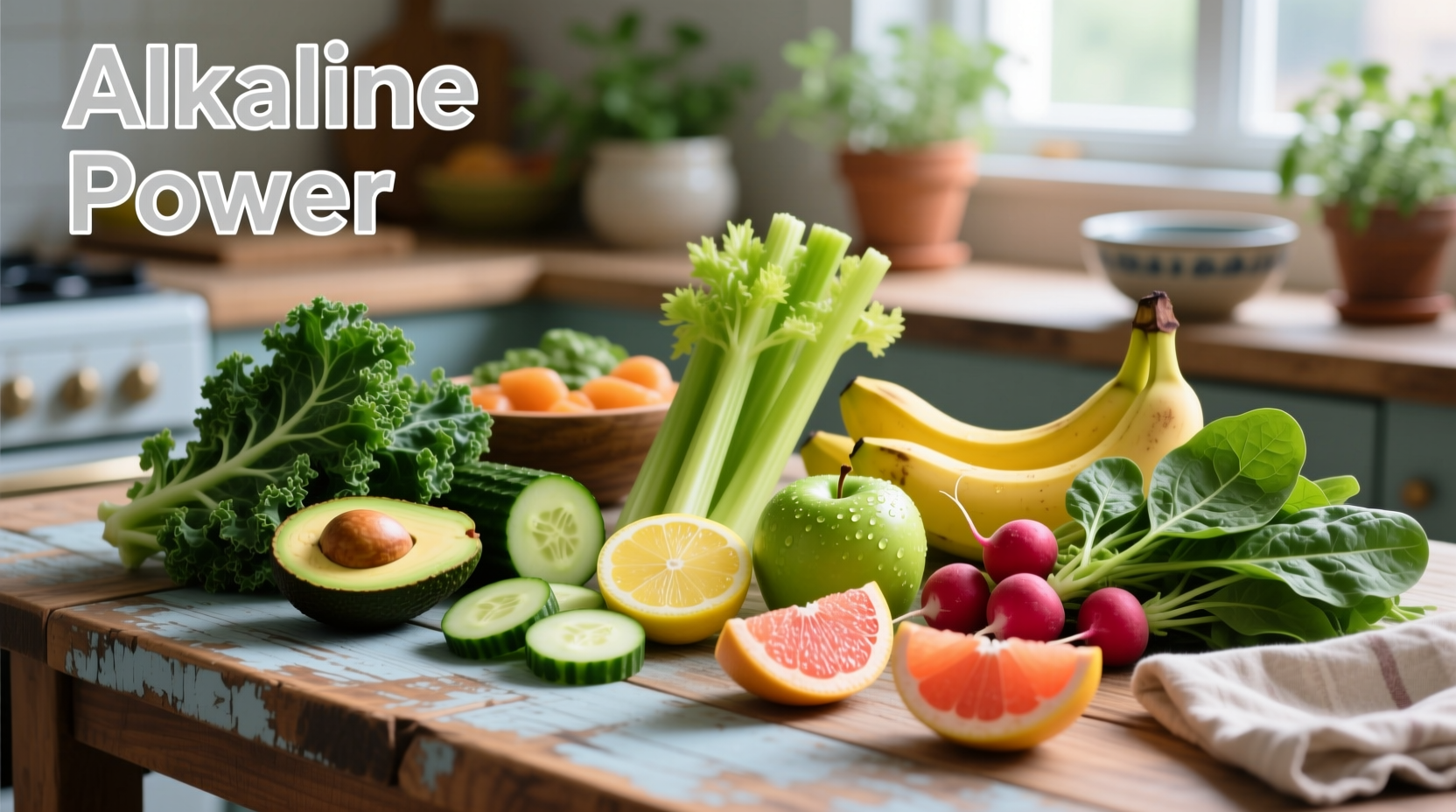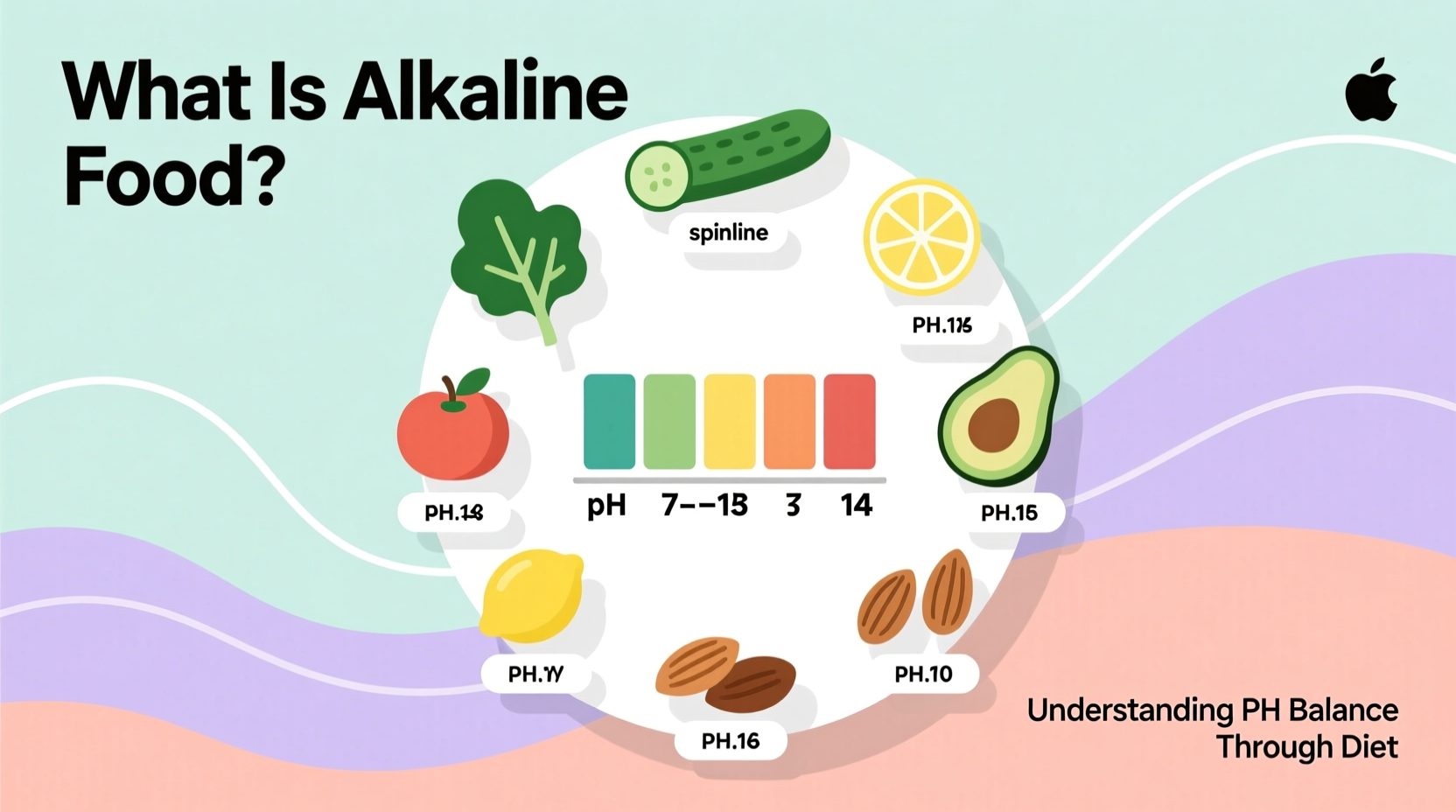Discover how alkaline foods work with your body's chemistry and which everyday items belong on your plate. This science-backed guide cuts through diet myths to deliver practical, evidence-based information you can use immediately to support your nutritional choices.
Understanding Alkaline Foods: Beyond the pH Hype
When you hear "alkaline foods," you're encountering a concept rooted in food chemistry. These foods create alkaline ash after digestion—a residue measured on the pH scale. Your body maintains a tightly regulated pH balance between 7.35-7.45, slightly alkaline. While food doesn't change your blood pH (your kidneys and lungs handle that), certain foods do influence the potential renal acid load (PRAL) your body processes.
"The alkaline diet concept often gets oversimplified," explains nutrition researcher Dr. Susan Jenkins. "What matters isn't making your body alkaline—it's reducing dietary acid load that may strain your natural buffering systems over time."

The Science Behind Food pH and Your Body
Your body's pH regulation is remarkably precise. Blood pH stays between 7.35-7.45 regardless of diet—deviations indicate serious medical conditions. However, the foods you eat affect the acid load your kidneys must process. High-acid diets may increase calcium excretion, potentially impacting bone health according to some research.
The PRAL score measures a food's potential acidifying effect. Negative scores indicate alkaline-forming foods:
| Food Category | PRAL Score Range | Examples |
|---|---|---|
| Most Alkaline | -20 to -30 | Spinach, kale, celery, cucumber |
| Moderately Alkaline | -5 to -15 | Broccoli, avocado, almonds |
| Neutral | -1 to +1 | Olive oil, coconut milk |
| Acid-Forming | +5 to +20 | Cheese, eggs, chicken |
Top Alkaline Foods You Should Know
Research from the National Institutes of Health identifies these highly alkaline foods:
- Leafy greens (kale, spinach, Swiss chard) - PRAL: -16 to -22
- Citrus fruits (lemons, limes) - Despite initial acidity, metabolize alkaline
- Root vegetables (beets, carrots, sweet potatoes)
- Cruciferous vegetables (broccoli, cauliflower, Brussels sprouts)
- Almonds - The only nut with negative PRAL score
Interestingly, lemon water—a popular morning ritual—starts acidic (pH 2-3) but metabolizes to alkaline ash. This demonstrates how a food's initial pH differs from its post-metabolism effect.
Alkaline Diet: Benefits and Realistic Expectations
While some claim alkaline diets cure diseases, the Mayo Clinic states there's no evidence they prevent or treat cancer. However, research shows potential benefits:
- May support bone mineral density (per NIH study)
- Could reduce muscle wasting in older adults
- Often aligns with plant-based eating patterns linked to lower chronic disease risk
- Might improve magnesium availability for enzyme function
"The real value isn't in pH manipulation," notes Dr. Jenkins, "but in the nutrient density of alkaline-promoting foods. You're naturally increasing potassium, magnesium, and antioxidants while reducing processed foods."
Practical Ways to Increase Alkaline Foods
You don't need extreme dietary changes to benefit. Start with these evidence-based strategies:
- Vegetable-forward meals: Make vegetables 70% of your plate at lunch and dinner
- Smart substitutions: Replace one animal protein serving daily with legumes or tofu
- Alkaline snacks: Choose cucumber slices with lemon juice instead of crackers
- Hydration boost: Add lemon or cucumber to water (despite initial acidity)
- Balanced breakfast: Opt for oatmeal with berries and almonds instead of bacon
Avoid common pitfalls like eliminating all animal products unnecessarily. The Harvard Healthy Eating Plate recommends balanced inclusion of plant and animal foods for most people.
Debunking Common Alkaline Diet Myths
Let's clarify misconceptions with scientific evidence:
- Myth: Alkaline diets change your blood pH
Fact: Your body maintains blood pH within 0.1 points—food cannot alter this - Myth: Urine pH reflects overall body acidity
Fact: Urine pH varies naturally and doesn't indicate systemic acidity - Myth: All acidic-tasting foods are acid-forming
Fact: Lemons and tomatoes are acidic but metabolize alkaline
Remember that context matters: An occasional steak won't disrupt your pH balance, just as one salad won't make you alkaline. Consistent dietary patterns determine long-term effects.
Your Alkaline Food Journey Starts Today
Focus on what matters: increasing nutrient-dense plant foods while maintaining balance. Start with one simple change this week—perhaps adding an extra serving of leafy greens to your daily meals. Track how you feel after two weeks, noting energy levels and digestion. The most sustainable approach combines alkaline-promoting foods with other healthy habits you enjoy.
Do alkaline foods change your blood pH?
No, your blood pH remains tightly regulated between 7.35-7.45 regardless of diet. Alkaline foods affect the potential renal acid load your kidneys process, not your actual blood pH.
What are the most alkaline fruits?
Watermelon, cantaloupe, mangoes, and citrus fruits like lemons and limes are among the most alkaline fruits despite their initial acidity, as they metabolize to alkaline ash.
Can you eat meat on an alkaline diet?
Yes, in moderation. The alkaline approach emphasizes balance—pairing moderate animal proteins with abundant vegetables creates a more neutral acid load than meat-heavy meals.
How quickly do alkaline foods affect your body?
Some effects like improved hydration may be immediate, but research suggests meaningful changes in acid load markers take 2-4 weeks of consistent dietary patterns.











 浙公网安备
33010002000092号
浙公网安备
33010002000092号 浙B2-20120091-4
浙B2-20120091-4